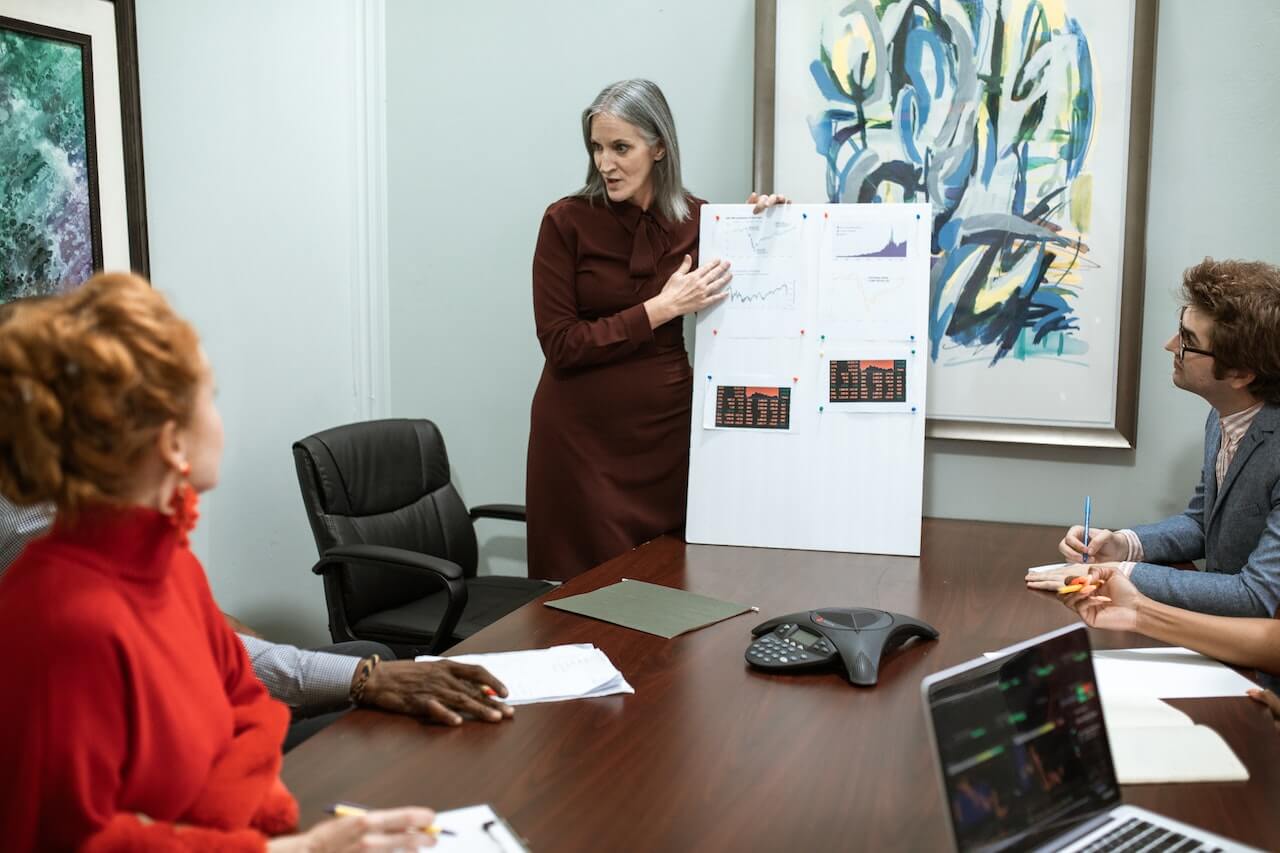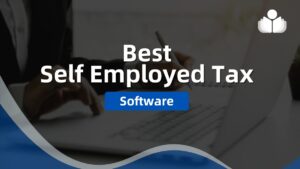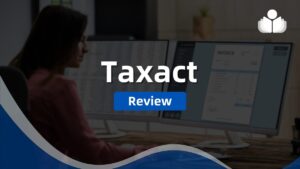© Copyright Carter McNamara, MBA, PhD, Authenticity Consulting, LLC.
Sections of This Topic Include
- About this Document
- Need More Learner-Driven Programs (accommodate learners’ expressed needs)
- Need More Focus on Self-Management (management development starts with people)
- Address Increasing Cynicism (get past quick fixes to realistic expectations)
- Address Increasing Burnout (information alone rarely helps)
- Help Leaders Help Each Other (produces exponential increase in development programs)
- Convey Practical and Relevant Information (more quality with quantity)
- Incorporate Relevant Learning Activities (without practice, there’s no knowledge)
- Develop Skills in Reflection (to value and learn from one’s own experiences)
- Address “Paralysis from Analysis” (“What’s the meaning of it all?”)
- Bibliography
Library’s Blogs Related to Needs in Training and Development
In addition to the articles on this current page, also see the following blogs that have posts related to Needs in Training and Development. Scan down the blog’s page to see various posts. Also, see the section “Recent Blog Posts” in the sidebar of the blog or click on “Next” near the bottom of a post in the blog. The blog also links to numerous free related resources.
- Library’s Career Management Blog
- Library’s Human Resources Blog
- Library’s Leadership Blog
- Library’s Supervision Blog
- Library’s Training and Development Blog
About this Document
This document is Chapter Two from the booklet “Leaders Circles: Self-Managed Teams of Self-Directed Learners” by Carter McNamara, MBA, Ph.D. The chapter is a research-oriented overview of the problems often encountered when using traditional classroom training in hopes of enhancing management skills (including leadership and supervisory skills), solving complex problems, and/or resolving organizational problems.
Traditional classroom techniques are highly useful for communicating various theories and models to a large body of students to “socialize” them into a field. Traditional training techniques are also useful to convey procedures for conducting highly focused and rather specific activities. Recommendations herein are intended to direct development programs to be more relevant and developmental for today’s highly diverse and busy leaders. As leaders must change to accommodate the changing nature of organizations, trainers, and developers must change to accommodate the changing nature of leadership.
More Learner-Driven Programs: Accommodate Learners’ Expressed Needs
Educators intend their courses to be as relevant as possible to their students, or learners. However, to meet the expanding and diverse needs of students, educators often fall victim to instilling more quantity than quality in their courses. The primary goal of educators then becomes to expose the students to as much of this “learning” as possible. Meeting this goal requires educators to conduct a fast-paced and intensive delivery of course information. Students are left to quickly record the information, store it away, somehow realize which information is needed in a current work situation, and know where the information can be accessed. Students rarely accomplish this feat.
Leaders needing information to meet a current challenge in their workplaces often must wait several months until a related course is scheduled to be held. Often, fees for training programs are set high so as to be based on “executive-level pricing” — too many developers and learners, the concept that high fees somehow imply high value. Rarely are participants configured to remain together in their own networks as they support each other to apply their new book knowledge.
An increasing number of developers realize that the above approaches must be changed. They realize that longer-lasting forms of learning occur around participants’ current and real-world issues. They
realize the need for adaptable development programs that can be integrated with other forms of learning to accommodate the needs of highly diverse and busy learners. Developers cannot improve their methods on their own. The most important contribution from learners is for them to speak up about their needs and frustrations regarding training and development programs.
More Focus on Self-Management: Management Development Starts with People
If individuals are to effectively lead their organizations, they must first effectively lead themselves. Revans (1983, p. 55) explains, “Those unable to change themselves cannot change what goes on around them. … Without the power to discard beliefs shown to be wrong, one cannot introduce actions known to be right.”
More development programs must follow this principle. Smith (1993, p 44) adds, “A consistent feature of the better-researched competency models is the inclusion of the need for self-knowledge, self-understanding, and self-management. … I have found that ultimate success increases in proportion to the attention given to this by participants and faculty.” Senge et. al., (1994) explains the importance of each leader’s understanding their own “mental models” about the world, that is, their sets of assumptions which leads them to perceive the world as they do. Senge asserts that working with mental models “offers
the highest leverage for change” (p. 239).
It is often extremely stressful to lead in today’s rapidly changing society, organizations, and marketplaces. Leaders require strong senses of balance, humility, and confidence to retain clear perspectives and exercise continuing courage in their decisions. The most basic requirement is that they remain authentic in their dealings with themselves and others. This, in turn, requires ongoing support, affirmation, and understanding so they can cultivate the courage to lead authentically.
Leaders require more development programs that dedicate time specifically for each leader to express and work on their own needs. Development must start where each leader is now, to address current needs around which leaders can learn.
To learn about themselves and from their own experiences, leaders require continuous feedback from other experienced leaders. Leaders must participate in their development in an authentic fashion. Self-development programs will not be effective if leaders don’t take responsibility for their own development, which excludes passive dependency on outside “experts” for quick-fix answers. The courage for this authenticity requires a safe environment and support from others.
Address Increasing Cynicism: Get Past Quick Fixes to Realistic
Expectations
Cynicism on the Rise
Research indicates that cynicism is on the rise in American business and industry, which increasingly hurts their competitiveness and ability to accommodate today’s needed organizational changes.
Mirvis and Kanter (1989) found in their national survey that 43% of workers are cynical and 40% of managers and supervisors are cynical, as well. In their later study (1991) they concluded that cynicism among workers is increasing.
Mirvis and Kanter (1989) are careful throughout their work to remind us that cynicism is different from skepticism which is a healthy response to work and life. Skeptics are open to change. Cynics aren’t.
Twenty years ago, Goldner, Ritti, and Ference (1977) suggested that as organizations become more complex, members become often more cynical. This does not bode well, considering that our organizations are indeed becoming more complex as they struggle to respond to increased competition, public expectations, dynamic technologies, and diverse workforces.
Effects of Cynicism
Jaffe and Scott (1993) explain that cynical managers can undermine large-scale organizational transformation through impatience, emotional illiteracy, elitism, insecurity, poor modeling, anger, and alienation. The authors note an unfortunate, yet common, by-product of many of today’s training sessions: “a ‘workshop high’ intended to produce momentary resolve to change [but!] then bitter disappointment and cynicism” (pp. 141-142).
Mirvis and Kanter (1989, p. 383) explain that the recipe for cynicism is simple: “hype up people’s hopes, disappoint them, and then take advantage of them until they become disillusioned.”
In their latter study (1991) they restate this recipe by explaining three key ingredients to cynicism:
- Unrealistically high expectations of oneself and others,
- The experience of disappointment in oneself and others [and the resulting feelings of frustration and defeat!], and
- Disillusionment from and being deceived by others. Systems theorist, Peter Senge (1990, p. 146), notes,
“Scratch the surface of most cynics and you find a frustrated idealist — someone who made the mistake of converting his ideals into expectations.”
Addressing Cynicism
Mirvis and Kanter (1991) believe that organizations must address this increasing cynicism by managing more fairly and operating in an open, honest, straightforward, and particularly, realistic manner (that is, an authentic manner). Employees must be able to participate in governance, provide regular reality checks to management, have positive role models, and perceive an open and honest pay system. Sanford and Mang (1993, p. 157) note,
“It takes equal effort on the part of operators to overcome patterns, one of the most common being the fear and/or cynicism that this is just another `program of the month’.”
Development programs can address rising cynicism by avoiding the promise of quick-fix strategies, truly listening to the needs of leaders, and providing strategies for leaders to test their expectations in their workplaces. One of the most effective approaches to testing expectations is by discussing them with other experienced leaders and “piloting” them in their places of work.
At a minimum, programs must provide safe environments where cynics can express their views and frustrations. Unless learners can reach a point where they’re participating in an authentic fashion (even if only by cynical rantings), developers and learners may be wasting their time and even making things worse.
Address Increasing Burnout: Information Alone Rarely Helps
Uncertainty, ambiguity, change, and paradox dominate management literature. Rosen (in Hendrick, 1993, p. E1:2), President of the American Institute of Stress, indicates that recent, dizzying changes in technology and the economy are causing unprecedented burnout, cynicism, sickness, and absenteeism.
Burnout and its associated symptoms of chronic anxiety, tension, and depression are destructive to leaders’ quality of life and performance. Their low morale and productivity impair organizational effectiveness. In this state, leaders cannot readily comprehend and apply the seemingly complex nature of concepts and models suggested in today’s management literature.
The most effective strategy for dealing with stress is to remove the stressor; usually, this is not possible (Weick, 1979). The second most effective strategy is personal resiliency. This strategy, in turn, depends on a strong sense of self and consistent sources of renewal. Burned-out learners cannot readily apply written or stated suggestions for renewal. The best strategies for renewal include individual attention, highly accessible forums for expression, and ongoing support from others.
In addition, those who are burned out often have unrealistic expectations of what they can do. Feedback from experienced leaders can temper expectations, resulting in more realistic and reasonable workloads.
Help Leaders Help Each Other: Produces Exponential Increase in Development “Programs”
Market research conducted by MAP for Nonprofits indicated that leaders felt isolated and hungry for information from experienced peers, but unable to sustain methods for ongoing interactions. The results of MAP’s research concur with that of Balog (1994) and Revans (1983).
Strategic alliances and collaboration are usually encouraged because of increased access to needed resources and potential cost savings from economies of scale; rarely are these strategies suggested to help leaders help each other with ongoing support, problem-solving, and learning.
When leaders do establish relationships with other leaders, these relationships rarely afford the extent of trust and confidentiality required to provide ongoing support. When leaders encounter major challenges in their workplaces, they typically look to designated “experts” for advice — they rarely look to each other. This phenomenon is rather ironic considering the high regard in which leaders seem to hold each other, particularly in regard to the strong credibility they have in each other’s feedback.
Networks provide leaders with a reliable means for social interaction which, in turn, enhances leaders’ learning. Senge (1990) explains that one of the biggest myths in development is that people learn from experience. He clarifies that they don’t learn from experiences alone — they require ongoing feedback. Networking provides leaders with an effective means for that ongoing feedback. Paulo Freire (in Bell, Gaventa, and Peters, 1990) points out that authentic thinking — thinking that is concerned with reality — does not take place in ivory tower isolation, but in communication with others. We develop our own sense of meaning from ongoing communication of perceptions and ideas with others.
Effective networking and development programs must include time focused on each participant so they can discuss their own complex needs and receive targeted assistance and resources. Effective listening and feedback cultivate supportive affirmation and validation. At a minimum, development programs must cultivate safe environments in which leaders can share their needs and help each other to meet their ongoing needs.
If the means for accessible and self-managing networks were established among leaders to help them solve real-world problems, there exist the means for an exponential increase in leadership effectiveness. This is very likely the most strategic service developers could provide leaders, their organizations, and their communities.
Convey Practical and Relevant Information: More Quality with Quantity
As noted by Eccles and Nohria (1992, p. 1), “In recent years, there has been an amazing amount of verbiage instructing managers on how to become `leading-edge,’ `excellent,’ or `innovative’ — yet little of it attends to the practical questions of how to actually get things done in the organizations.”
Many new models are proposed as if to be quick, permanent fixes to today’s major problems in the workplace (Kilmann, 1989). Deutsch (1991) asserts that training has traditionally been separate from the day-to-day realities of managing an organization. Morris (1991, p. 76) notes, “Of all the manifold needs that the different forms of learning must meet, surely the greatest is the need for leadership, rather than the need for acquiring stocks of established knowledge.”
There is a role for “advanced” theories and models. Related discussion is useful to the extent that learners understand and appreciate the benefits of research, spawn enlightening analyses and exploration, and infer the eventual application of these theories and models. Both developers and learners must continue to realize that effective learning results from experience and feedback; this, in turn, requires developers to convey information that is ultimately practical and relevant in nature.
Ensuring information is practical and relevant requires continued testing of information in the day-to-day realities of leading an organization, continuous feedback from those who apply the information, and ongoing authentic participation from dedicated developers and learners.
Incorporate Relevant Learning Activities: Without Practice, There’s No Knowledge
Henderson (1993, p. 18) notes that “Managerial competencies cannot be delivered effectively by teaching alone” (p. 21). Mangham (1990, p. 115) adds, “… to learn, managers must be given the opportunity to perform, to be involved with and responsible for the solution to a business problem.” Revans (1983, p. 64) states the issue eloquently: “If new perceptions are not soon checked against the real world they purport to reflect — and, preferably, by some test that challenges the responsibility of the manager undertaking to conduct it — none can be sure the discussions have not so much modified perception in the direction of truthfulness as they may have merely swapped one misunderstanding for another.” Paulo Freire (in Bell, Gaventa, and Peters, 1990, p. 98) summarizes this strong principle of learning: “Without practice, there’s no knowledge.”
It is tempting to design curricula to be based only on simulated learning activities, such as case studies. However, it’s often difficult for students to generate learning from these simulations and readily apply that learning back in their workplaces. Materials and resources provided for learning must be strategies for meaningful learning, and not provided as ends in themselves. Extended analyses and discussions of abstract concepts and theories are, at times, fascinating. However, the value of these types of activities should be based, not on their value for novelty and entertainment, but on relevance and practicality.
Developers must incorporate learning strategies that require ongoing actions from learners. These ongoing actions cultivate courage, provoke experiences around which deep learning occurs, and ground learning in the day-to-day realities of leading an organization. Ongoing actions also constitute a “reality check” to highly novel concepts and ideas.
Develop Skills in Reflection (to Value and Learn from One’s Own Experiences)
Writers (Marsick, 1987; McGill and Beaty, 1995; Pedler, 1991) allege that today’s management development methods must change to effectively equip managers with the skills required to lead in today’s rapidly changing world. Morris (1991, p.76) warns, “In our rapidly changing and confused age of unreason, which often places far more emphasis on hasty and unconsidered action than reflective learning, we are in grave danger of confusing leadership with expertise.” McGill and Beaty (1995) explain that trainers must adapt their methods to accommodate the increasing need for student-centered learning, transferable skills, and closer links with industry. The authors explain, “In times of crisis or radical change, reflection becomes more important and also more difficult; it is at these times that we make powerful decisions about the future” (p. 21).
Schon (1983) emphasizes the need for today’s leaders and managers to be more reflective in order to learn from their experiences, especially in today’s increasing rate of change. Beckhard and Pritchard (1992, p. 9) note, “Probably the most important single process involved in effective change in the process of learning while doing [italics is theirs!].” McCaffrey (1994) found that while most students see themselves as reflective thinkers, traditional development methods provide few opportunities to think reflectively.
The extent to which developers and learners can cultivate effective inquiry and feedback is the extent to which they develop skills in reflection. (Note that, although the “Socratic Method” is based primarily on continued questioning as a form of inquiry, often the method is intended to manipulate learners to the “correct” answer as determined by the questioner.)
“The greatest barrier to change is not a lack of knowledge. We all know more than we know. It is our understanding that is the problem, not our ignorance” (Casey, 1991, p. 235).
Address Paralysis from Analysis: “What’s the Meaning of it All?”
Terry (1993) describes our increasing preoccupation with the need for authenticity. He mentions that many of us experience a (p. 114) “deep, yet undefined, sense of disconnection,” “worry about the viability of new structures, and “a fragility of shared purposes.” Existential psychologist, Rollo May (1958, p. 13), explains that members of our society are going through a period of tremendous upheaval, causing symptoms of “unhappiness, inability to decide, general despair and meaninglessness …”
The recent increase in literature about finding a soul in business reflects this crisis in authenticity (Chappell, 1995; Heider, 1986; Koestenbaum, 1991; Moore, 1995; Pollard, 1996; Whyte, 1994;). Among the reasons they cite for our discomfort are disintegrating values in our society, tremendous changes as a result of globalization and telecommunications, and continued threats to our moral values from the strong pursuit of growing profits. Ray and Rinzler (1993) explain how this upheaval is associated with a “new paradigm in business.” Parchment (1993, 1995) and Wheatley (1992) add that this overall situation in business leaves many of us searching for meaning. Overall, these writers describe the confusion, alienation, and loss of soul and meaning as experienced by many of us today, and recommend various and different strategies for restoring our senses of soul and meaning.
But these warnings of impending doom and the barrage of suggested strategies for “recovery” (many of which seem quite difficult to convert to the day-to-day realities of leading in organizations) leave many leaders convinced that they just can’t lead effectively. They hear that they must improve dramatically and soon. Yet they feel that try as they might, they just aren’t competent enough to “correctly” apply the “expert” strategies.
Given the stresses inherent in any leadership role and this nearly impossible situation, they work even harder to find meaning from yet more writers, gurus, and consultants. Many of these leaders become disillusioned with themselves and their outside “experts.”
They become neurotic, confused, and cynical. Smith (in Pauchant, 1995, p. 181) best explains the typical trap into which many of us fall: “… we are so determined not to become what we fear is possible, that every day we fail to be anything of substance. And it is this failure to be anything of substance that we are so desperate to avoid. So we have already become in the present what we most fear we could become in the future. However, while we work so hard not to become that in the future, we fail to recognize we are already in that condition in the present.”
Central to the beliefs of existential philosophers and therapists, such as Frankl (1984), Pauchant (1993, 1995), and Yalom (1980), is that there are certain anxieties and responsibilities inherent in life and that these cannot be avoided. If we attempt to delegate them to outside “experts” or rid them through quick fixes, then we fall into chronic anxiety, boredom, and despair.
Ultimately, we lose meaning. Meaning cannot be supplied to us; we each must take responsibility for developing our own meaning in our lives. Meaning comes from our living authentically, including taking full responsibility for ourselves, participating fully in the here and now, and applying the courage and actions to change the things we realistically can change.
Readers might recognize that the existential perspective described in the above paragraph is very similar to systems’ theorist Peter Senge’s “Shifting the Burden” archetype that he describes in his book, The Fifth Discipline (Currency Doubleday, 1990).
Senge explains, “An underlying problem (in a system) generates symptoms that demand attention. But the underlying problem is difficult for people to address, either because it is obscure or costly to confront. So people ‘shift the burden’ of their problem to other solutions — well-intentioned, easy fixes which seem extremely efficient. Unfortunately, the easier ‘solutions’ only ameliorate the symptoms; they leave the underlying problem unaltered.
The underlying problem grows worse, unnoticed because symptoms apparently clear up, and the system loses abilities it had to solve the underlying problem” (p. 104).
Learn More in the Library’s Blogs Related to this Topic
In addition to the articles on this current page, also see the following blogs that have posts related to this topic. Scan down the blog’s page to see various posts. Also, see the section “Recent Blog Posts” in the sidebar of the blog or click on “Next” near the bottom of a post in the blog. The blog also links to numerous free related resources.
- Library’s Career Management Blog
- Library’s Human Resources Blog
- Library’s Leadership Blog
- Library’s Supervision Blog
- Library’s Training and Development Blog
Bibliography
Cynicism:
- Goldner, F. H., Ritti, R. R., & Ference, T. P. (1977). The production of cynical knowledge in organizations. American Sociological Review, 42(4), 539-551.
- Hendrick, B. (1993, June 28.) Struggle with stress. Atlanta Constitution, p. E1:2.
- Jaffe, D., & Scott, C. D. (1993). Building a committed workplace: An empowered organization as a competitive advantage. In Ray and Rinzler, (Eds.), The new paradigm in business, New York, NY: Putnam.
- Mirvis, P. H. (ed.). (1991). Introduction: The new workforce/The new workplace. Human Resource Management, 30(1), 1-5.
- Mirvis, P., & Kanter, D. L. (1989). Combating cynicism in the workplace. National Productivity Review, 8(4), 377-394.
- Mirvis, P., & Kanter, D. L. (1991). Beyond demography: A psychographic profile of the workforce. Human Resource Management, 30(1), 45-68.
- Sanford, C., & Mang, P. (1993). A work in progress at Du Pont: The creation of a developmental organization. In Ray and Rinzler, (Eds.), The new paradigm in business, New York, NY: Putnam.
Development (Self-, Management, and Organization):
- Argyris, C., & Schon, D. A. (1974). Theory in practice: Increasing professional effectiveness. London, Jossey-Bass.
- Balog, J. K. (1994). Chief executive peer groups: A case study of Action Learning (Doctoral dissertation, Northern Illinois University, 1993). Dissertation Abstracts International, 54/08, 3104.
- Beckhard, R. (1969). Organization development: Strategies and models. Reading, MA: Addison-Wesley.
- Beckhard, R., & Pritchard, W. (1992). Changing the essence: The art of creating and leading fundamental change in organizations. San Francisco, CA: Jossey-Bass.
- Bell, B., Gaventa, J., & Peters, J. (Eds). (1990). We make the road by walking: Myles Horton and Paulo Freire (Conversations on education and social change). Philadelphia, PA: Temple University Press.
- Block, P. (1981). Flawless consulting. San Diego, CA: Pfeiffer and Company.
- Bouchard, P. (1997). Self-directed learning in organizational settings (working paper). Concordia University, Department of Education, 1455 de Maisonneuve Blvd. West, Montreal (Quebec), Canada H3G 1M8.
- Capra, F. (1982). The turning point. New York: Simon & Schuster.
- Capra, F. (1991). The Tao of physics. Boston, MA: Shamhala.
- Casey, D. (1991). The role of the set adviser. (In Pedler, op cit.)
- Cummings, T. G., & Worley, C. G. (1993). Organization development and change. Minneapolis, MN: West Publishing Company.
- Deutsch, C. L. (1991, June 23). Putting a practical spin on training. The New York Times, p. 25.
- Dixon, N.M., Hales, L., & Baker, R. (1991). Helping US human resource professionals to action learning. (In Pedler, op cit.)
- Eccles, R. G., & Nohria, N. (1992). Beyond the hype: Rediscovering the essence of management. Boston, MA: Harvard Business School Press.
- Fisher, T. D. (1997). Self-directedness in adult vocational students: Its role in learning and implications for instruction. World Wide Web.
- Garratt, B. (1991). The power of action learning. (In Pedler, op cit.)
- Hackman, J. R. (1986). The psychology of self-management in organizations. In M.S. Pallack & R. O. Perloff (Eds.), Psychology and work: Productivity, change, and employment. Washington, DC: American Psychological Association.
- Henderson, I. (1993). Action learning: A missing link in management development. Personnel Review, (22), 14-24.
- Hicks, R.F., & Bone, D. (1990). Self-managing teams: Creating and maintaining self-managed work groups. Menlo Park, CA: Crisp Publications, Inc.
- Hughes, M. (1991). The mixed set. (In Pedler, op cit.)
- Knowles, M. (1990). The adult learner: A neglected species. Houston, TX: Gulf Publishing.
- Kilmann, R. H. (1989). Managing beyond the quick fix. San Francisco, CA: Jossey-Bass.
- Knowlton, J. C., Jr. (1993). Action Learning: A case study of hospital managers (Doctoral dissertation, University of Georgia, 1992). Dissertation Abstracts International, 53/09, 3082.
- Mangham, I. (1990). Managing as a performing art. British Journal of Management, (1)2, 105-15. MAP for Nonprofits. (1995). Report to the community. St. Paul, MN: Author.
- Marsick, V. J., & Cederholm, L. (1988). Developing leadership in international managers — An urgent challenge. The Columbia Journal of World Business, 23(4).
- Marsick, V. J., (Ed.). (1987). Learning in the workplace: The case of reflectivity and critical reflectivity. Adult Education Quarterly, 38, 187-198.
- McCaffrey, P. A. (1994). Student and faculty perceptions of reflective development in adult nursing students (Doctoral dissertation, Columbia University Teachers College, 1993). Dissertation Abstracts International, 55/01, 54.
- McGill, I. & Beaty, L. (1995). Action learning: A practitioner’s guide. London: Kogan Page.
- Morgan, G. (1988). Riding the waves of change: Developing managerial competencies for a turbulent world. San Francisco, CA: Jossey-Bass.
- Morris, J. (1991). Minding our Ps and Qs. (In Pedler, op cit.)
- Neilsen, E. H. (1984). Becoming an OD practitioner. Englewood Cliffs, CA: Prentice-Hall.
- Pauchant, T. C. (1993). In search of existence: On the use of the existential tradition in management and organization development. In Advances in Organization Development, Massarik, F. (Ed.). Norwood, NJ: Ablex Publishing Corporation, pp. 103-127.
- Pauchant, T. C. (1995). In search of meaning. San Francisco, CA: Jossey-Bass.
- Pedler, M. (Ed.). (1991). Action learning in practice. London: Gower.
- Piskurich, G. M. (1983). Self-directed learning: A practical guide to design, development, and implementation. San Francisco, CA: Jossey-Bass.
- Ray, M., & Rinzler, A. (Eds.). (1993). The new paradigm in business. Los Angeles, CA: Jeremy P. Archer.
- Reeves, T. (1996, May). Is action learning a cult? In Action Learning News, 15(2), 6.
- Revans, R. (1983). The ABC of action learning. London: Chartwell-Brett Ltd.
- Revans, R. (1991). Action learning: Its origins and nature. (In Pedler, op cit.)
- Schon, D. A. (1983). The reflective practitioner. New York, NY: Basic Books.
- Schwartz, R. M. (1994). The skilled facilitator: Practical wisdom for developing effective groups. San Francisco, CA: Jossey-Bass.
- Senge, P. (1990). The fifth discipline. New York, NY: Currency Doubleday.
- Senge, P., Roberts., C., Ross, R. B., Smith, B. J., & Kleiner, A. (1994). The fifth discipline field book: Strategies and tools for building a learning organization. New York, NY: Currency Doubleday.
- Smith, B. (1993). Building managers from the inside out Developing managers through competency-based action learning. Journal of Management Development, 12(1), 43-48.
- Terry, R. W. (1993). Authentic leadership: Courage in action. San Francisco, CA: Jossey-Bass.
- Vaill, P. B. (1989). Managing as a performing art: New ideas for a world of chaotic change. San Francisco, CA: Jossey-Bass.
- Watkins, K. E., & Marsick, V. J. Sculpting the learning organization. San Francisco, CA: Jossey-Bass.
- Weick, K. (1979). The social psychology of organizing. Reading, MA: Addison-Wesley.
- Weinstein, K. (1995). Action learning: A journey in discovery and development. London: HarperCollins.
- Wheatley, M. (1992). Leadership and the new science. San Francisco, CA: Berrett-Koehler.
Existential Philosophers/Psychologists:
- Frankl, V. E. (1984). Man’s search for meaning: An introduction to logotherapy. (3rd ed.) New York: Simon & Schuster.
- May, R. (1958). Man’s search for himself. New York: W. W. Norton & Co.
- Rogers, C. (1961) On becoming a person: A therapist’s view of psychotherapy. Boston, MA: Houghton Mifflin.
- Yalom, I. (1980). Existential psychotherapy. New York: Basic Books.
Soul in the Workplace:
- Chappell, T. (1995). Soul of business: Managing for profit and the common good. Bantam Books.
- Heider, J. (1986). The Tao of leadership: Leadership strategies for a new age. Toronto: Bantam.
- Koestenbaum, P. (1991). Leadership: The inner side of greatness. San Francisco, CA: Jossey-Bass.
- Moore, T. (1995). Care of the soul. New York, NY: HarperCollins, Inc.
- Pollard, C. W. (1996). The soul of the firm. Grand Rapids, MI: HarperBusiness-Zondervan.
- Whyte, D. (1994). The heart aroused: Poetry and the preservation of the soul in Corporate America. New York, NY: Doubleday.
Recommended Reading List About Myles Horton and Paulo Freire:
(Horton did not publish; however, there are numerous publications about Horton and Highlander. The following is a rather miscellaneous list.)
- Freire, P. (1970). Pedagogy of the oppressed. New York, NY: Seabury Press.
- Freire, P. (1978). Pedagogy in the process: Letters to Guinea-Bissau. New York, NY: Seabury Press.
- Freire, P. (1985). Politics of education: Culture, power, and liberation. South Hadley, MA: Bergin and Garvey.
- Freire, P. (1987). Education for critical consciousness. New York, NY: Continuum.
- Freire, P. (1989). Learning to question: A pedagogy of liberation. New York, NY: Continuum.
- Freire, P. (1994). Pedagogy of hope: Reliving pedagogy of the oppressed. New York, NY: Continuum.
- Glen, J. (June 15, 1988). Highlander Folk School: Fostering individual growth and social change. The Chronicle of Higher Education.
- Horton, A. (1989). Highlander Folk School: A history of its major programs (1932-1961). Brooklyn, NY: Carlson, Publishing.
- Kennedy, W. B. (Fall 1981). Highlander praxis: Learning with Myles Horton. Teachers College Record, (83), 1.
Go to the main Training and Development page.
For the Category of Training and Development:
To round out your knowledge of this Library topic, you may want to review some related topics, available from the link below. Each of the related topics includes free, online resources.
Also, scan the Recommended Books listed below. They have been selected for their relevance and highly practical nature.
 Sections of this topic
Sections of this topic
















